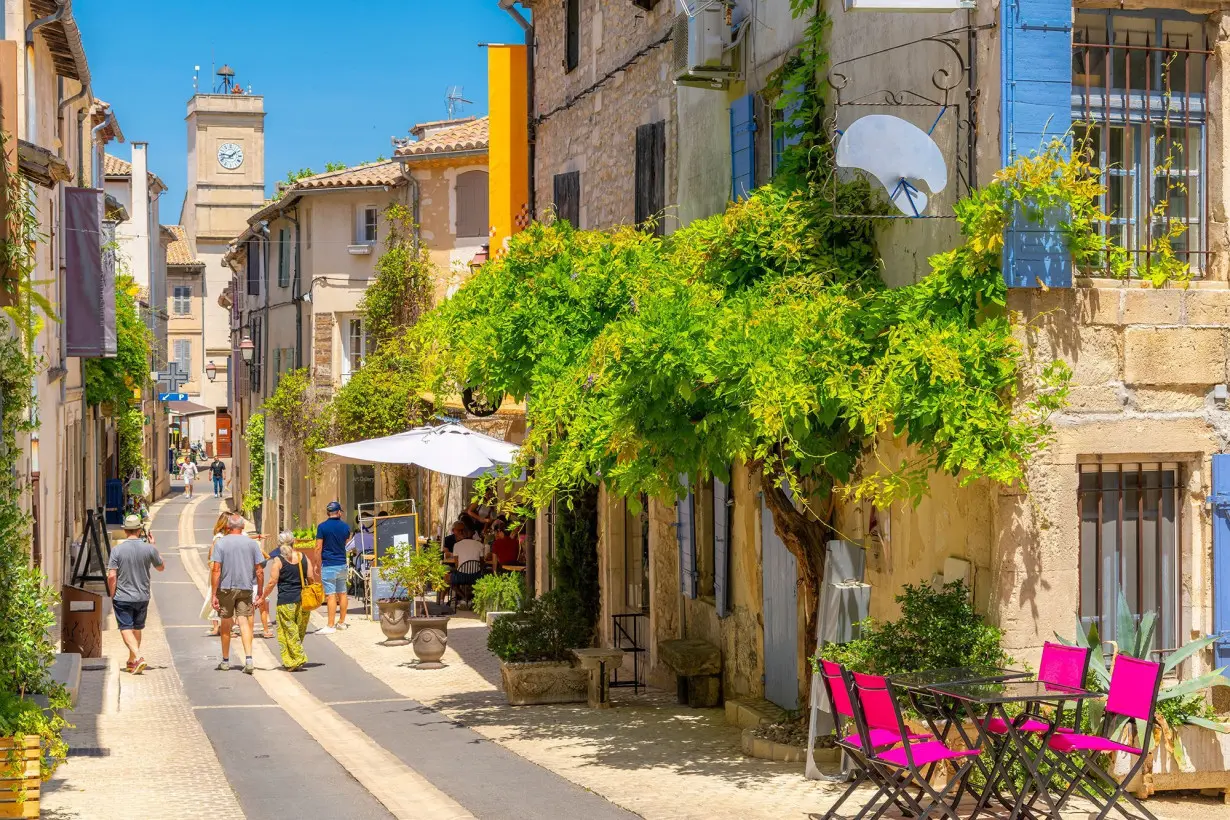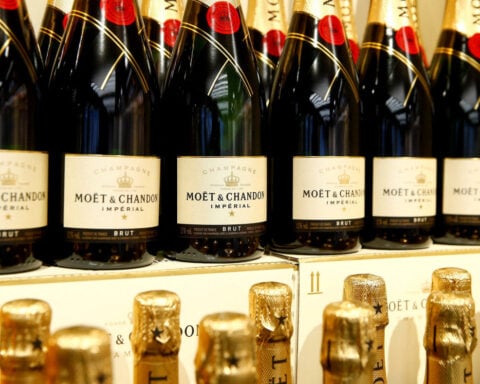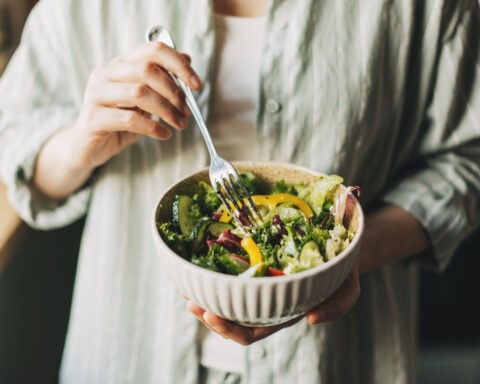(CNN) — For many people, the idea of moving to France usually conjures up dreams of romance or – because this is the land of Michelin stars and cafe culture – food.
US woman Jane Satow found both. Not only that, but in a country renowned for showing disdain toward the cuisines of foreigners, she has also found work teaching locals how to cook.
Satow, 56, left her home in Virginia two decades ago to start a new life in the bucolic southern French region of Provence.
Hailing from a family of farmers with a passion for the kitchen, she had a background in catering before making the move, and her love of food fueled her ambition of one day moving to the French region known for its Mediterranean menus as well as its rolling fields of bright purple lavender.
“My first jobs were in restaurants and I finally worked for several fine dining restaurants (in the US), which inspired my passion for fine food, wine and cooking,” she tells CNN.
Satow attended a cooking school in Colorado, where she completed a course in French techniques and joined a “seriously nerdy weekly wine club.”
Eventually, after a spell living in Chile, her British husband’s job took the couple across the Atlantic and in 2005, they relocated near to Saint-Rémy-de-Provence, a picturesque town south of the medieval city of Avignon, where they raised their three children.
“It was a dream come true for me to move to Provence, and I never looked back,” she says.
The marriage didn’t last, but after divorcing she decided to remain.
“I truly love my adopted country and even at the risk of remaining on my own, although I have many dear French friends, I was absolutely sure about staying put in France.”
Fairytale romance
Satow met her new “handsome” French partner, Christophe Daumas, in 2019 at a salsa dance class and says he literally “swept her off her feet” like in a fairytale.
She credits Daumas with helping her pursue a long-held desire to share her knowledge of food with others.
“I have had this dream of wanting to open a teaching kitchen since I arrived in France, and finally with the support and encouragement of Christophe, I started looking for a place to buy to create a dedicated space where I could offer cooking classes.”
Satow found a rundown 17th-century townhouse in the historic center of Saint-Rémy in 2019 but had to press pause on renovations and opening the school during the pandemic.
Though disappointed, she says she used the time to develop fresh recipes and test old ones in her new kitchen.
Her venture, La Cuisine Provençal, finally opened in 2021. She says she now has clients from all over the world, mostly travelers coming to Provence for the first time, but also locals.
“In the winter when there are less tourists we offer classes geared towards French people such as creating a holiday meal from A-Z and foie gras quatre façons (four ways).”
Satow holds a titre de séjour, a sort of French green card that gives her residency and rights to work and now, after living almost 20 years in Provence, she plans to apply for French nationality.
After initially grappling with the language, she says she now speaks fluent French.
‘Dream come true’
She still lives in the country house she shared with her ex-husband in Egalières, a village 12 kilometers (about 7 miles) outside Saint-Rémy, that she also rents out to vacationers in summers.
When it’s full of guests, Satow moves to her old townhouse in Saint-Rémy where the “kitchen” is.
“I was very lucky to purchase the townhouse before Covid as the house prices went up by around 30% since then due to lots of Parisians buying second homes in Provence afterwards,” she says.
She paid 200,000 euros (about $222,000 by today’s conversion rates) for the 85-square-meter historic townhouse and spent another 60,000 renovating the 30-square-meter kitchen on the ground floor and the two bedrooms on the upper floors.
“It was a dream come true, and I could never have imagined how much success we have had,” she says of her cooking school venture.
“Christophe actually made me think that moving to France was my destiny. He helped me realize my dream of starting my cooking school, doing all the renovations himself – as he’s a contractor. It was really a labor of love which we put our hearts and souls into completing together. I really don’t think I could have done it without his support.”
She says she likes to stick to teaching authentic local cuisine with a few twists.
“It is important to me to pay homage to the local Provencal cuisine which developed over hundreds of years and is still made by local people in their homes.”
Satow confesses she was quite concerned that at the beginning, as an outsider, she might have her attempts at tackling classic French cooking rejected.
“When I first moved to France as an American, albeit a very foodie one, I was totally intimidated by French chefs and could not imagine competing with them.
“Since then I’ve learned so much, mainly on my own – cooking and reading hundreds of recipes learning lots of tips and discovering French regional dishes, taking many cooking classes over the years in France and wine tasting at domaines.”
French people, she says, are passionate about food. It’s their favorite subject to discuss and, whether at the butcher or the cheesemonger, they will tell you their favorite preparation for whatever you are buying on any given day.
She defines herself as a traditionalist who also likes to stick to classic French cooking, but with a touch of nouvelle cuisine as per France’s culinary culture.
“For me it’s important to mètre en valeur (make relevant or let shine) the local traditional recipes which I’ve lightened up a bit.”
Keeping it local
La Cuisine Provençal offers collective group cooking classes in English and French with a maximum of 50 participants, and also organizes private dinners.
It only uses fresh ingredients sourced from within a 50-kilometer radius and produce from local farmers, plus plenty of local olive oil and very little cream or butter.
Satow feels lucky to have access to amazing lamb, fresh fish from the Mediterranean, and farm-raised, grass-fed poultry and meats. She says French people take so much pride in raising their livestock and the animals are often grazing upon herbs de Provence which grow naturally and perfume the meats and cheeses.
Among her signature dishes are lamb provençale with roasted tomatoes, guinea fowl with creamy chanterelle sauce and sautéed green beans, aioli with sea bass façon beurre monté (in butter), fried zucchini blossoms and coque au vin blanc (chicken with white wine and coco beans).
Crudités with traditional Provençal anchoïade are one of her musts, with a “fabulous” dip for raw vegetables made from a base of homemade garlic mayonnaise and cured anchovies.
Other dishes she teaches are fresh grilled sardines on garlic-scrubbed toast with roasted red peppers and parsley; and cod-poached façon beurre monté with fresh thyme.
Her caviar d’aubergine is very popular among guests – it features roasted eggplant, roasted garlic, the best extra virgin local olive oil, lemon, fleur de sel from the Camargue, fresh ground pepper and fresh basil.
“I’ve taken those recipes and refined them with the nouvelle cuisine and chef techniques I learned in the US, and I’ve added my own personal touches,” she says.
For example, Satow blanches the green beans for four minutes then sautées them in garlic and olive oil to add some color and enrich the flavor, so they are a bit more done than al dente.
To make her special ratatouille, she says she sautées each vegetable separately because each one needs to be cooked differently – the zucchini and yellow squash are delicately browned on high heat in a light coat of olive oil, the tomatoes are slow-roasted separately in the oven to enhance flavor, the eggplant is seared on high heat and nicely browned and the red pepper and onions are slightly charred.
“I then mix all of the vegetables together and add a splash of red wine vinegar, finishing salt, freshly ground coarse peppercorns and lots of fresh basil.”
Cultural clashes
Apart from the food and romance, living in the south of France has several other perks.
The cost of living is much lower than that of the US, says Satow. For instance, fresh vegetables and fruits, and specialty products like French cheeses, charcuterie and wine are much cheaper.
Saint-Remy was an easy choice, she says.
“It’s very charming and has a special light. I fell in love with the countryside, olive trees and lavender fields.”
But it wasn’t all smooth sailing at the beginning.
Other than the language barrier, she had to face a series of red tape-related obstacles and overcome some cultural clashes.
“Challenges with bureaucracy were having to show proof of residency to get a bank account, for example when we just moved to France and didn’t yet have a fixed residence.
“It was a bit tough… it just took time.”
The biggest issue for foreigners, especially Americans, Satow says, is the French tendency to say “no” right away before considering whether it’s possible to work through something.
“Being persistent, positive and trying to find a solution is imperative,” she adds.
The-CNN-Wire
™ & © 2024 Cable News Network, Inc., a Warner Bros. Discovery Company. All rights reserved.

 UK inflation unexpectedly eases in December, which could reduce pressure in bond markets
UK inflation unexpectedly eases in December, which could reduce pressure in bond markets
 Body count from South African mine siege rises to 60
Body count from South African mine siege rises to 60
 US importers rush in goods from China as Trump tariff threat looms
US importers rush in goods from China as Trump tariff threat looms
 Novak Djokovic breaks a tie with Roger Federer for the most Grand Slam matches in tennis history
Novak Djokovic breaks a tie with Roger Federer for the most Grand Slam matches in tennis history
 China's RedNote: what you need to know about the app TikTok users are flocking to
China's RedNote: what you need to know about the app TikTok users are flocking to
 British author Neil Gaiman denies ever engaging in non-consensual sex as more accusers come forward
British author Neil Gaiman denies ever engaging in non-consensual sex as more accusers come forward








